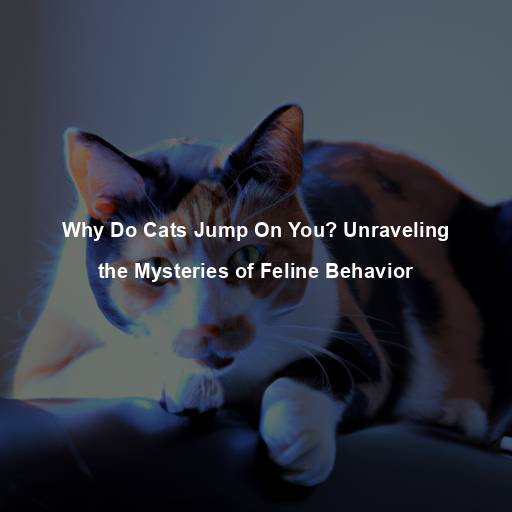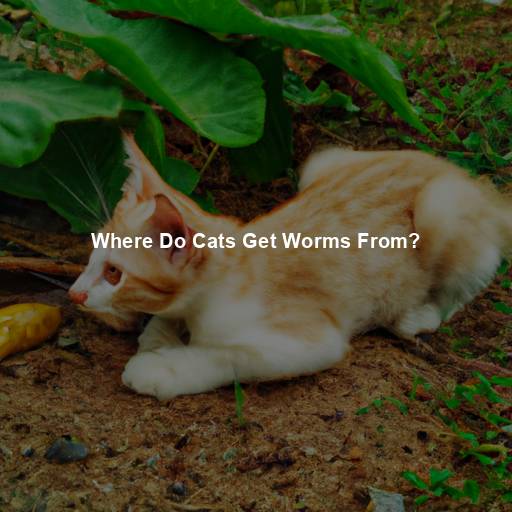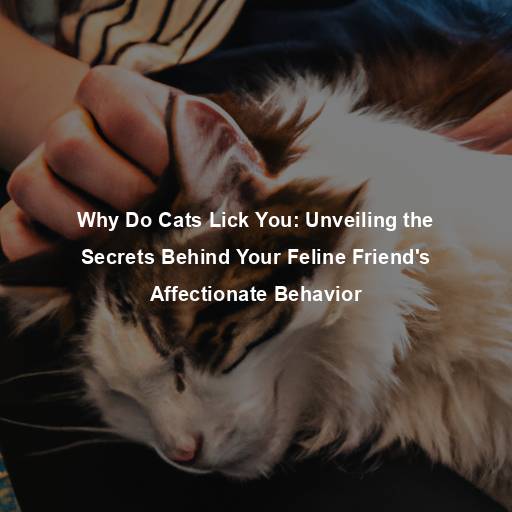Why Do Cats Jump On You? Unraveling the Mysteries of Feline Behavior
Last Updated on July 12, 2023 by Evan
Contents [hide]
- 1 Understanding the Feline Fascination with Jumping
- 1.1 Seeking Height and Dominance
- 1.2 Attention and Affection-Seeking
- 1.3 Playfulness and Stimulation
- 1.4 Asserting Territory
- 1.5 Anxiety or Stress
- 1.6 Attention-Seeking Behavior Reinforcement
- 1.7 Health Considerations
- 1.8 The Role of Age and Development
- 1.9 Breed-Specific Traits
- 1.10 Environmental Factors
- 1.11 Establishing Boundaries and Redirecting Behavior
- 1.12 Training and Positive Reinforcement
- 1.13 Understanding Body Language
- 1.14 Creating a Safe and Comfortable Environment
- 1.15 Seeking Professional Advice
- 1.16 The Fascinating World of Feline Instincts
- 1.17 Attention-Seeking and Affection
- 1.18 Marking Territory
- 2 Creating a Harmonious Environment
- 3 FAQs: Why Do Cats Jump on You?
Understanding the Feline Fascination with Jumping
Have you ever wondered why your furry feline friend leaps onto you or jumps onto surfaces with such gusto? It’s not just random acrobatics, my friends. No, it is a manifestation of their innate curiosity and agility. Cats, oh elusive creatures, possess an inexplicable desire to explore and play, which leads them to engage in these perplexing behaviors.
Seeking Height and Dominance
Have you ever wondered why cats have a peculiar obsession with high places? It turns out, these enigmatic creatures have a hidden motivation behind their gravity-defying antics. When a feline gracefully leaps onto your unsuspecting lap, it’s not simply a random display of acrobatics. Deep within their feline instincts lies a primal urge to conquer the tallest peaks, both literal and metaphorical.
Attention and Affection-Seeking
Cats are social creatures that crave attention and affection from their human companions. Jumping on you can be their way of seeking your attention and initiating interaction. By physically engaging with you, they are able to establish a bond and strengthen the connection between both of you. It is their way of saying, “Hey, I want your attention, and I want it now”!
Playfulness and Stimulation
Jumping can also be a manifestation of a cat’s playful nature. Cats are known for their agility and love of chasing and pouncing. Jumping onto you or onto various surfaces can serve as a way for them to release their pent-up energy and engage in a playful interaction. It is their way of inviting you to play and be a part of their feline games.
Asserting Territory
There’s something mesmerizing about the enigmatic behavior of cats. Have you ever wondered why they jump on you and leave their distinct scent behind? Believe it or not, this isn’t just a random act – it’s their way of claiming you as their own. Through delicate rubs and gentle kneading, cats mark you as part of their domain, exuding their love and ownership with a touch as perplexing as it is endearing.
Anxiety or Stress
In some cases, cats may resort to jumping on their human companions as a response to anxiety or stress. Cats can be sensitive creatures and may exhibit unusual behaviors when they are feeling overwhelmed or uncertain. Jumping on you may serve as a way for them to seek comfort and reassurance from a familiar and trusted presence.
Attention-Seeking Behavior Reinforcement
When it comes to our feline friends, we must acknowledge their uncanny ability to understand what makes us tick. Cats are no fools; they figure out pretty fast what gets them our undivided attention. So, if leaping onto us results in snuggles and playtime, you can bet your whiskers they’ll keep doing it. It’s our responsibility to reward the behavior we want while gently guiding them towards more suitable ways of seeking our affection.
Health Considerations
While jumping is generally a normal behavior for cats, it is crucial to be mindful of any changes in their behavior or physical capabilities. If your cat suddenly stops jumping or exhibits difficulty in doing so, it could be an indication of an underlying health issue. Joint problems, arthritis, or injuries may affect their ability to jump. Consult with a veterinarian if you notice any significant changes in your cat’s jumping behavior.
The Role of Age and Development
If you’ve ever had the pleasure of sharing your home with a feline friend, you know just how unpredictable their jumping antics can be. It’s a wild, captivating dance of energy and curiosity that changes as they grow and evolve. Those adorable, mischievous kittens are like tiny, furry acrobats, pouncing and leaping with boundless enthusiasm. As they mature, their jumps become more calculated and deliberate, a reflection of their experience and well-honed instincts.
Breed-Specific Traits
Cat behavior can be as diverse as the colors in a rainbow, and one fascinating aspect to explore is their jumping tendencies. Just like humans, felines come in all shapes and sizes, and this holds true for their agility levels. From the energetic leaps of Bengal and Abyssinian cats, known to pounce with graceful precision, to the more serene and composed nature of Persian and Ragdoll breeds, who prefer to keep their paws grounded, there is a captivating array of jumping behaviors to discover. So, if you find yourself face-to-face with a fleet-footed feline or a placid puss, rest assured that it is simply their unique nature shining through.
Environmental Factors
The ever-elusive jumping prowess of our feline companions is deeply intertwined with their living environment. A cat’s innate desire to scale great heights and explore the vertical realm is profoundly affected by their surroundings. By offering tantalizing vertical havens such as elegant cat trees or inviting shelves, we can unlock the secret to redirecting their acrobatics away from our unsuspecting selves and onto more fitting surfaces. Embrace the perplexing world of feline behavior and watch in awe as the art of jumping finds its rightful place in their mystical universe.
Establishing Boundaries and Redirecting Behavior
While it’s important to understand the reasons behind why cats jump on you, it’s equally important to establish boundaries and redirect their behavior when necessary. If you prefer that your cat doesn’t jump on you, it’s essential to provide alternative outlets for their energy and playfulness. Engage them in interactive play sessions using toys or provide designated spaces, such as scratching posts or climbing trees, to redirect their jumping behavior.
Training and Positive Reinforcement
Cat behavior can undergo significant transformations through the power of training. Employing positive reinforcement methods, like rewarding with treats or showering with praise, can effectively steer your feline friend toward preferred behaviors while dissuading undesirable leaps. Maintaining consistent efforts and showcasing ample patience are paramount as cats require time to comprehend and embrace new patterns of conduct.
Understanding Body Language
Understanding feline communication can be a mind-boggling adventure. When your fluffy companion leaps onto you, their body language serves as a cryptic code waiting to be unraveled. A raised tail and a relaxed demeanor might suggest a desire for attention or a whimsical playtime. On the flip side, a rigid posture, bushy tail, or other anxiety-driven behaviors could signify inner turmoil and unease.
Creating a Safe and Comfortable Environment
Providing a safe and comfortable environment is crucial for your cat’s overall well-being and can help minimize excessive jumping behaviors. Ensure that your home is free from hazards that may cause injury, such as unstable furniture or cluttered spaces. Additionally, providing ample opportunities for mental and physical stimulation, such as interactive toys and puzzle feeders, can help alleviate restlessness and reduce jumping behaviors.
Seeking Professional Advice
Are you feeling perplexed about your feline friend’s incessant jumping habits? Fret not! Seek guidance from a seasoned veterinarian or an esteemed animal behaviorist to unravel this puzzling matter. With their invaluable expertise, they will tailor comprehensive behavior modification techniques to tackle your cat’s idiosyncratic quirks head-on.
The Fascinating World of Feline Instincts
Cats, those enigmatic creatures, find their roots in the depths of evolutionary history, tangled in instincts that guide their every move. Their relentless penchant for jumping, especially on unsuspecting humans, reveals fascinating insights into their mysterious ways. Whether they are aiming to conquer lofty heights, establish dominance, engage in playful antics, or simply demand our undivided attention, there is a multitude of factors contributing to their perplexing jumping escapades. Dare we unravel the intricate dance between feline instincts and human interaction?
Attention-Seeking and Affection
Cats, those enigmatic and captivating creatures, possess a deep-seated desire for connection and warmth from the humans they hold dear. When these furry felines gracefully leap upon you, it is not merely an act of mischief, but rather a profound way to beckon your undivided attention and ignite a delightful exchange. Such behavior serves as their eloquent declaration, whispering, “In this moment, your undistracted presence is what I yearn for, and I yearn for it passionately”! Through this intimate physical interaction, they artfully forge an unbreakable bond and satiate their inherent longing for social companionship.
Marking Territory
When our feline friends decide to pounce on us, they’re not just randomly choosing targets. It turns out that behind this seemingly spontaneous act lies a deep-seated desire to assert their dominance and establish their turf. By engaging in gentle body rubs or engaging in the delightful kneading motion, our furry companions are actually leaving their signature scent and staking their territorial claim, thus essentially making us part of their exclusive domain. So, the next time your cat snuggles up to you in this peculiar manner, remember that it’s their quirky way of displaying affection and marking their ownership.
Creating a Harmonious Environment
Understanding the reasons behind your cat’s jumping behavior is just the first step. To create a harmonious environment, it’s essential to establish boundaries and redirect their behavior when necessary. Here are some strategies to consider:
Provide Vertical Spaces
We all know how our beloved feline friends are natural climbers, always yearning to conquer new heights and unravel the mysteries of vertical spaces. To cater to their innate instincts, it’s essential to offer them enticing alternatives like cat trees, perches, or shelves. Not only does this appease their insatiable desire for elevation, but it also protects our sanity by redirecting their acrobatic leaps to more suitable surfaces. So, let’s embark on a journey to fulfill their captivating urge for heights, leaving our homes intact and our hearts bursting with a sense of fulfillment.
Interactive Play Sessions
Discover the captivating world of interactive play with your feline companion, as they unlock the art of channeling their abundant energy and zest for life in a transformative way. By introducing a curated selection of toys into your shared domain, you embark on a mutual journey that transcends mere entertainment, guiding them away from their innate desire to spring upon you for attention or stimulation. Witness the wonders as their playful spirit finds solace in a constructive outlet, creating an unbreakable bond, and filling your lives with a harmonious equilibrium.
Positive Reinforcement
Encouraging good behaviors in cats can be an enigmatic journey. By employing positive reinforcement methods, including the occasional treat or showering them with praise, one can gradually steer their feline companions away from their reflexive urge to leap onto unsuspecting laps. Raising curious eyebrows and imbuing a sense of wonder, this approach treads a labyrinth of unpredictability, fostering a symbiotic dance of teachable moments between humans and their enigmatic feline friends.
Training and Redirecting
Training your cat to follow specific commands, such as “off” or “down,” can be useful in redirecting their jumping behavior. By consistently reinforcing these commands and providing alternative outlets for their energy, you can help shape their actions to align with your preferences.
Read and Respond to Body Language
When it comes to our feline friends, deciphering their secret language can be a perplexing task. A cat’s body language holds the key to unlocking their intentions, particularly when they decide to vault onto our unsuspecting laps. If you notice your cat’s body exuding an aura of calmness, with their tail standing tall and proud, chances are they’re craving some quality time with you or a playful rendezvous. Conversely, if your cat seems on edge, their tail transforming into a fluffy spectacle, or if they display signs of unease, it’s a clear indication that anxiety or stress has taken hold.
Creating a Safe Environment
Ensure that your home is free from hazards that may cause injury during jumping episodes. Secure furniture and remove any potential obstacles or fragile items to create a safe environment for both you and your cat.
Seek Professional Advice
If you have concerns about your cat’s jumping behavior or if it becomes problematic, consider seeking advice from a veterinarian or professional animal behaviorist. They can provide expert guidance tailored to your specific situation and help you address any underlying issues.
FAQs: Why Do Cats Jump on You?
Why do cats jump on people?
Ever wondered why our feline friends decide to go airborne and pounce on us humans? Well, the reasons are as varied as the personalities of our whiskered companions. One possibility is that they’re on the hunt for attention and love, seeking that ever-elusive cuddle session. Despite their reputation for independence, cats are known to enjoy the company of their human counterparts, so don’t be too surprised if they leap onto your lap like a stealthy acrobat. Another explanation could be that they’re simply saying hello, using their gravity-defying jumps as a physical display of affection and joy. So, the next time you find yourself with a cat catapulting towards you, remember that it’s just their way of blurting out, “Hey, let’s hang out!”
Why does my cat jump on me when I’m sitting down?
When you are sitting down, you become a comfortable and accessible target for your cat to jump on. Cats find elevated positions desirable due to their natural instinct to observe their surroundings from a higher vantage point. By jumping on you, they not only get a better view but also seek comfort and warmth. Moreover, they may view you as a safe and familiar presence, which makes jumping onto your lap or shoulder an appealing option for relaxation.
Is it normal for cats to jump on your back?
Yes, it is normal for some cats to jump on your back. This behavior usually occurs when your feline friend is feeling playful or trying to seek your attention. Some cats tend to see your back as an enticing perch or an opportunity for playtime. However, if your cat’s jumping becomes excessive or aggressive, it is advisable to consult with a veterinarian or an animal behaviorist to rule out any underlying issues.
How can I prevent my cat from jumping on me?
Looking for ways to discourage your feline friend from turning you into their personal trampoline? Fear not, as we’ve got some nifty strategies up our sleeves to save you from becoming a launching pad. One approach is to offer alternative elevated surfaces like fancy cat trees or stylish shelves, giving your pet a less jumpy outlet for their energy. Don’t forget the power of positive reinforcement! Rewarding your cat with treats or heaps of praise when they resist the urge to pounce on you can work wonders. And when all else fails, a gentle spritz of water or a masterful art of distraction might just do the trick in curbing their aerial acrobatics.
Are there any health concerns associated with cats jumping on people?
Jumping can be a real conundrum when it comes to our feline friends. On one hand, it’s all part of their playful nature. But on the other hand, an overly zealous jump could result in some unexpected scratches or even injuries. To keep the peace, it’s important to keep your cat’s nails trimmed and establish some ground rules for their jumping escapades. If you find yourself feeling perplexed about your cat’s behavior or its effect on your own well-being, it’s best to seek guidance from a trusted veterinarian or a cat behavior specialist.







